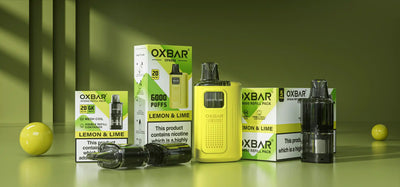On May 20, 2017, the UK enforced the Tobacco & Related Products Regulations (TRPR), a significant step in aligning with the European Commission’s revised Tobacco Product Directive (TPD) from two years prior. While these regulations initially came into effect on May 20, 2016, a transitional period allowed older products to remain on the market until May 19, 2017. Post this date, any nicotine-containing vaping products had to meet TRPR requirements to be legally sold within the EU.
Key Restrictions Under TRPR
The TRPR regulations introduced several notable restrictions on vaping products:
-
Tank and Bottle Sizes: Vape tanks are now limited to a maximum capacity of 2ml, and e-liquid bottles are restricted to 10ml. These changes aim to standardise product sizes but have sparked debate among vapers.
-
Nicotine Strength: The nicotine concentration in vaping products is capped at 20mg/ml (2%). This limit is intended to reduce nicotine intake but may be challenging for some users who require higher levels for effective cessation.
-
Health Warnings: Products containing nicotine must display health warnings similar to those on tobacco products. This aims to ensure consumers are fully informed of the potential risks.
-
Product Safety and Testing: The regulations mandate leak-proof refilling mechanisms, emissions testing, and the submission of toxicological data by manufacturers. These measures are designed to enhance product safety and quality.
-
Advertising Restrictions: Advertising of vaping products faces stringent limitations, impacting how manufacturers can communicate the benefits of vaping compared to smoking.
Compliance and Impact
For manufacturers, the TRPR regulations mean that to sell vaping products in the UK, they must submit detailed notifications to the Medicines and Healthcare products Regulatory Agency (MHRA). This includes comprehensive information on packaging, ingredients, toxicology, and emissions tests. The MHRA's role is crucial in ensuring that e-liquids meet high safety standards and are free from harmful substances.
However, the TRPR regulations have stirred controversy within the vaping community. While there is support for rigorous safety testing and improved packaging, some aspects are seen as overly restrictive. For example:
-
Advertising Limitations: The restrictions on advertising are criticised for potentially hindering public health efforts. Every smoker who quits can save the NHS an estimated £74,000, making effective communication about vaping’s benefits crucial.
-
Increased Costs and Reduced Diversity: The cost of compliance has led some e-liquid manufacturers to narrow their product ranges, which may reduce market diversity and increase costs for consumers. This is a concern for vapers who value variety and affordability.
-
Practical Challenges: The reduction in tank size to 2ml has been particularly contentious, especially among users of high-powered Sub Ohm devices. Frequent refilling can be inconvenient and may detract from the vaping experience. Similarly, the limitation of e-liquid bottle sizes to 10ml could result in increased packaging waste and higher costs.
Addressing the Challenges
The introduction of 10ml bottles aims to reduce issues related to leakage and spillage, promoting a cleaner and more hygienic refilling process. However, the restriction on nicotine strength could pose a barrier for smokers transitioning to vaping, as higher nicotine levels may be necessary for managing cravings effectively. This limitation might inadvertently push some users back to traditional tobacco products.
Moving Forward
The vaping industry continues to engage with regulatory bodies to address these concerns and seek necessary improvements. While the TRPR regulations aim to enhance product safety and standardise the market, it is essential to balance these goals with practical considerations for both manufacturers and consumers.
For more information on the latest vaping products and offers, visit Vape Offers. Explore our e-liquid collection and disposable vape options to find products that suit your needs.
As the vaping landscape evolves, staying informed about regulatory changes and their implications is crucial. We will continue to monitor and provide updates on how these regulations impact the vaping industry and its consumers.

